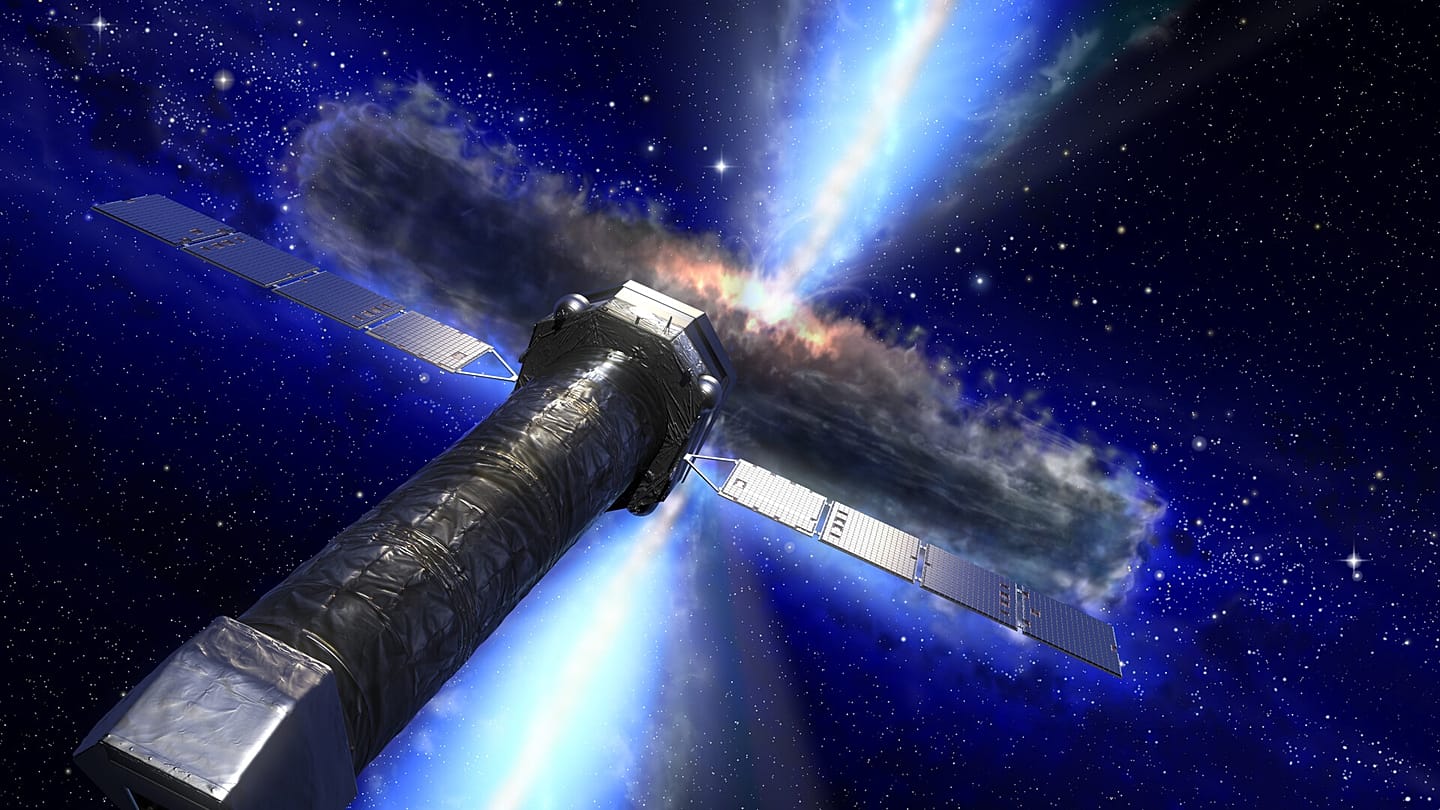
The European Space Agency’s (ESA) future space observatory, the NewAthena telescope, could detect an unprecedented number of supermassive black holes – some formed when the universe was less than a billion years old.
At least that’s the expectation of an international team led by Portuguese researchers who have created a simulated X-ray catalogue of the sky, using cosmological simulations to test NewAthena’s ability to detect the faintest and most distant black holes.
Their research was recently publishedin the journal Monthly Notices of the Royal Astronomical Society.
“With NewAthena, it will be possible to discover around 250,000 active galactic nuclei, which are the black holes that are actively feeding,” Nuno Covas, a researcher at the Institute of Astrophysics and Space Sciences (IA) at the University of Lisbon, told Euronews.
And of these 250,000, 20,000 will be around two billion years from the beginning of the universe and 35 will be around 1,000 million years from the beginning of the universe”.
That’s about 30 times stronger than current telescopes, Covas added.
This will be the first time that astronomers will be able to statistically study active galactic nuclei (AGNs) – the compact centre of a galaxy – in X-rays from the so-called Epoch of Reionisation, a phase in cosmic history when the universe was less than a billion years old.
According to the study authors, X-rays are an essential tool for finding these black holes while they are actively feeding, as the matter that spirals into them heats up to millions of degrees and emits high-energy radiation.
José Afonso, also from the IA and the University of Lisbon, says that currently “we have almost reached that first phase of the universe, where galaxies and black holes begin to appear”.
But because NewAthena observes only a small region of the sky – an area of 10 square degrees – will make it possible to fully study those first galaxies and black holes.
Astronomers from the IA emphasise the importance of testing the potential of the NewAthena telescope to eventually overcome some of the great unknowns that still surround the formation of black holes.
One of the greatest challenges of modern astrophysics is to understand how galaxies and the black holes at their centre form and evolve together.
“What we really want is to discover these black holes giving rise to the formation of the first galaxies,” Afonso said.
“Today we can’t figure out what comes first. It’s a bit of a game of chicken or the egg. Does a gigantic black hole appear first and then accrete a galaxy around it, or is there first the formation of the galaxy, which then somehow gives rise to the appearance of a gigantic black hole?”
He added that the telescope, by discovering these first black holes in the first galaxies, “could make it possible to understand whether these holes may have appeared in the Big Bang itself”.
Israel Matute, one of the study’s authors, also said that “the large-field, high-energy view of the universe provided by NewAthena will be an essential complement to the revolutionary observatories of the next decade, including LISA (NASA/ESA) and the Square Kilometre Array (SKAO)”.
The NewAthena mission is currently in the development phase and should be formally adopted by ESA in 2027, but the telescope that will take an X-ray of the universe is scheduled for launch in 2037.
Another of the mission’s objectives will also be to map hot gas structures and determine their physical properties.